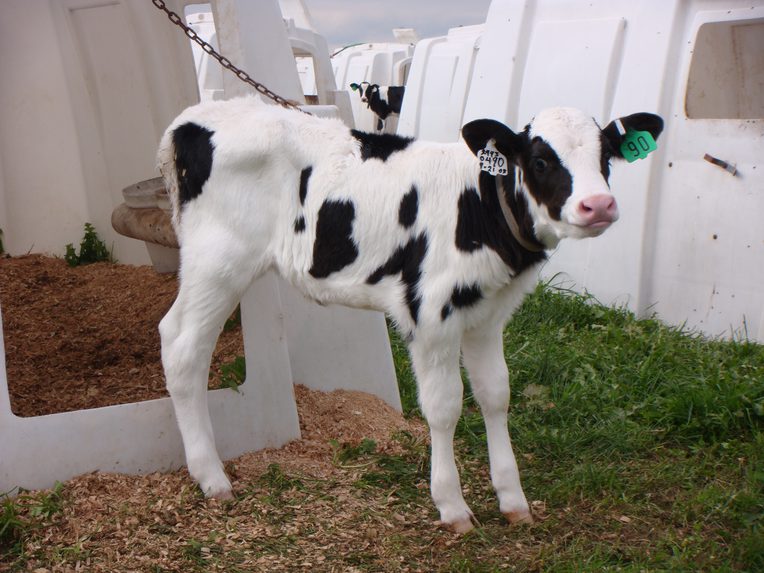Flatulence
From the Series: Lexicon for an Anthropocene Yet Unseen
From the Series: Lexicon for an Anthropocene Yet Unseen

The Anthropocene is the age of flatulence. Cars, ships, and trains belch copiously into the air as they transport an ever-growing number of bodies and goods across the globe. Shale gas, which is released through the hydraulic fracturing or fracking of deep shale formations, is rapidly growing in importance as a source of natural gas in the United States, even as some scientists warn that it has “the largest greenhouse warming consequences of any fossil fuel” (Howarth 2014, 48) over a short timescale. But cars and fracked wells are rivaled in their greenhouse gas footprint by another critical actor in this unfolding script: gassy cows who give new meaning to the familiar phrase silent but deadly.
What distinguishes gassy bovines from gassy humans? Why are the effects of cattle flatulence felt on a planetary scale, potentially lethal in a way that even the stinkiest human fart is not? Cows are able to digest the rigid, tough cellulose that makes up grass and other green plants only with the help of microbes who live in their rumen, one of the four separate chambers of their stomach, through a process called enteric fermentation. As these microbes break down the fibers into simple molecules, the methanogenic variety among them produce methane (CH4)—an anthropogenic greenhouse gas remarkable for its ability to capture heat and warm the atmosphere—which is released into the air mostly in the form of burps. As they eat their way through pastures often created by the large-scale clearing of forests and savannahs, cows, the largest emitters of methane among ruminants, are letting it rip. Methane emissions from livestock contribute about 80 percent of agricultural CH4 and 35 percent of total anthropogenic methane emissions. In the United States in 2015, atmospheric concentrations of methane accounted for almost 26 percent of total greenhouse gas emissions (EPA 2015).
In some ways, this story of flatulence is a classic cautionary tale about the Anthropocene, the current epoch in which humans are thought to act as a geological force (see Chakrabarty 2009). While it is important to remember that the increase in methane due to an expansion of human pastoralism is by no means a modern phenomenon (Bauer and Bhan 2016), it is also true that the scale and complexity of the contemporary livestock industry is unparalleled. The explosive growth in the global population of cattle, driven by the seemingly insatiable human craving for dairy and beef, is producing devastating effects on the planet. Human intervention and appetite has transformed flatulence from life into death, from a sign of the normal functioning of digestion to a sign of a planet in trouble. Ironically, even attempts to mitigate the geological impact of humans involve fantasies about the subjugation of nonhumans to human sovereignty. As scientists experiment with mixing genetic material from different breeds to engineer cows who are less gassy, but no less productive, the specter of human domination over the other-than-human looms large.

Controlling flatulence, however, has never been an easy business, and errant bovine leakages are no exception. Cattle exist in a prolonged state of flatulence that is produced through the actions and effects of an assemblage of bodies (human, animal, vegetal, and microbial), chemicals, and technologies that work within and outside a bovine corpus that is porous and open. Flatulent bovine bodies are not simply passive sites for the assertion of human control, but tenuous zones of encounter that are characterized by the permeability of boundaries and bodily integrity, and by the differentiated sharing of vulnerability and accountability. The affective and material entanglements that form in these zones of encounter are mysterious and resist human efforts at comprehensive knowledge. I was struck by the limits of human attempts to control the other-than-human in reading an interview with one of the project scientists of an EU-funded initiative to reduce methane emissions from cattle. He noted that this would not be an easy process given that the workings of the rumen were “far more complex and hard to understand” than human digestive systems. The scientist’s admission that cows are hard to know was echoed by another researcher, who described the rumen as one of “nature’s wonders” that could adapt quickly to different scientific solutions and return to producing methane in a few weeks. These acknowledgements of partiality in human knowledge of the other-than-human are a powerful reminder of the fact that nature, as Stuart McLean puts it, is an “intimate stranger” which can never be fully brought within the ambit of human desire and understanding.
This tale of bovine flatulence resists Anthropocenic framings in another important way. In India, scientists in the state of Kerala claim that Vechur cattle, an indigenous dwarf species, are not only well suited to hot climates but also produce significantly less methane than crossbred cattle. Clearly, it is not just the undifferentiated category of the human that must be challenged and complicated in accounts of the Anthropocene (cf. Haraway 2015; Bauer and Bhan 2016), but also that of the nonhuman. In other words, not all cows are the same. This was a lesson brought home to me during my fieldwork in the mountain villages of India’s Central Himalayan state of Uttarakhand. A friend named Prabha remarked upon the prodigious appetite and emissions of Jersey cows, which have become popular in the region for the amount of milk they yield, almost twice that of indigenous pahari(mountain) cows. “They’re like the English [angrez]. They eat this much [stretching her hands wide] and shit a lot. Our cows are like us: less goes in, less comes out.” In the supposedly leveled terrain of the Anthropocene, gassiness—both in its everyday origins and in its planetary effects—remains unequally distributed across human and nonhuman bodies.
Bauer, Andrew and Mona Bhan. 2016. “Welfare and the Politics and Historicity of the Anthropocene.” South Atlantic Quarterly 115, no. 1: 61–87.
Chakrabarty, Dipesh. 2009. “The Climate of History: Four Theses.” Critical Inquiry 35, no. 2: 197–222.
Environmental Protection Agency (EPA). 2015. “Inventory of U.S. Greenhouse Gas Emissions and Sinks: 1990–2013.”
Haraway, Donna. 2015. “Anthropocene, Capitalocene, Plantationocene, Chthulucene: Making Kin.” Environmental Humanities 6: 159–65.
Howarth, Robert W. 2014. “A Bridge to Nowhere: Methane Emissions and the Greenhouse Gas Footprint of Natural Gas.” Energy Science and Engineering 2, no. 2: 48–60.